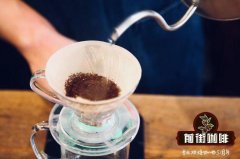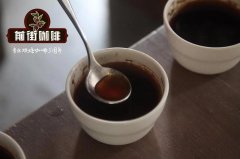What are the varieties of semi-washed coffee beans | characteristics of semi-washed Sumatran coffee

Professional coffee knowledge exchange More coffee bean information Please pay attention to coffee workshop (Weixin Official Accounts cafe_style)
The world of semi-washed treatments is subdivided into several similar treatments, namely Pulped Natural (Brazil) and Honey Process (Costa Rica), and Giling Basah (Indonesia).
Semi-washing is a compound coffee treatment that combines washing beans with sun drying, and the flavor and taste are in between.
Semi-washed, this treatment method eliminates the soaking and fermentation link of the washing treatment method, directly shelling and drying, saving water, time and cost. The coffee beans treated by semi-washing method have weak acid quality and high body. At this point, do you think I'm talking about mantinen? Yes, the semi-washing process is known locally in Sumatra as "Giling Basah," which translates as "wet planing,""wet stripping,""wet shelling," and so on. Indonesia is the only country that still uses this method in large numbers.
Semi washing is a combination of solarization and washing. The idea is to use less water than washing to produce coffee that tastes cleaner and thicker than washing. This process is popular in Indonesia, Mantaning and other places. Brazil has also started to use semi-washing in recent years.
Since 1699, nearly 100 genetic varieties of Arabica coffee have been created. There are four main types of coffee in Indonesia: Arabica, Robusta, Liberica and Ekselsa.
There are more than 20 varieties circulating in Indonesia market. The common varieties are Kadura, Katim, Timor, Tepica, S288, S795, Sidikalong, etc.
Semi-washing characteristics
Step 1: Screening
As with other treatments, coffee cherries need to be sifted first. The plucked cherries are placed in a pool. The ripe cherries settle to the bottom of the pool, while the unripe cherries float to the surface. Coffee farmers need to sift out the unripe cherries first.
Step 2: Remove peel and pulp
As with the washing method, a special machine removes the peel and pulp, leaving only the coffee beans covered with the endocarp, but a small layer of gum remains on top.
Step 3: Remove pectin
The pectin is removed by a pectin scraper (Demucilager), which uses only a small amount of water compared to washing.
Step 4: Drying
Take out the smooth-surfaced coffee beans and dry them outdoors until the moisture content drops to 12%.
flavor characteristics
Semi-washed coffee has the thick flavor and sweet feeling of sun-dried beans, but also has the clean, soft but not dull of washed beans.
END
Important Notice :
前街咖啡 FrontStreet Coffee has moved to new addredd:
FrontStreet Coffee Address: 315,Donghua East Road,GuangZhou
Tel:020 38364473
- Prev

What is the treatment of coffee semi-washing? what are the characteristics of coffee semi-washing?
Professional coffee knowledge exchange more coffee bean information Please follow the coffee workshop (Wechat official account cafe_style) when we buy coffee, we often come across such terms-washing, semi-washing, tanning, honey treatment, etc., in fact, these are the ways to deal with raw coffee beans, today to explain the difference. Semi-washing: because the washing method consumes too much water
- Next

What is the coffee sun treatment? what are the characteristics of the coffee raw bean sun treatment?
For more information on coffee beans, please follow the coffee workshop (Wechat official account cafe_style) Solar treatment (Natural process), which has the longest history and seems to be the simplest method: for more than a thousand years, the principle is to harvest coffee berries, spread them on the ground and dry them, then remove the dried peel, pulp and coffee shell.
Related
- Beginners will see the "Coffee pull flower" guide!
- What is the difference between ice blog purified milk and ordinary milk coffee?
- Why is the Philippines the largest producer of crops in Liberia?
- For coffee extraction, should the fine powder be retained?
- How does extracted espresso fill pressed powder? How much strength does it take to press the powder?
- How to make jasmine cold extract coffee? Is the jasmine + latte good?
- Will this little toy really make the coffee taste better? How does Lily Drip affect coffee extraction?
- Will the action of slapping the filter cup also affect coffee extraction?
- What's the difference between powder-to-water ratio and powder-to-liquid ratio?
- What is the Ethiopian local species? What does it have to do with Heirloom native species?

